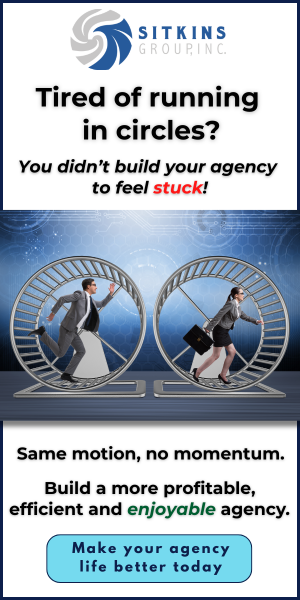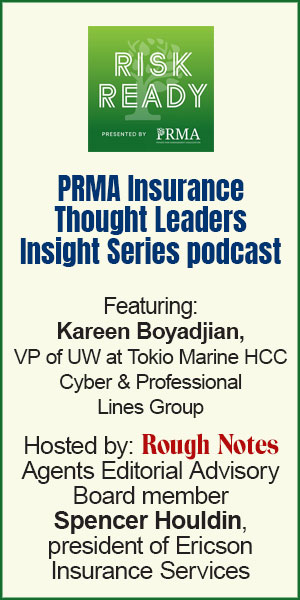DIFFERENTIATE YOUR BROKERAGE
THROUGH PROGRAM DESIGN
To be a top-flight consultant of any type and cement your role as
a strategic partner, you need to master advanced
program-design levers and tighten protections for your client.
By Michael Wayne
July 1 renewals are a fading memory. Thankfully.
Observing my colleagues during the months leading up to this annual event, especially the few weeks prior, never ceases to entertain me. Despite all the tools, resources, and information at their disposal, several always seem grossly underprepared.
Some make it seem like it’s no big deal. Some are in-between. In some cases, the clients are to blame for the hectic race to get everything done. The reasons why are infinite, but even in those cases, part of the blame can be laid at the feet of producers who simply do not educate and condition their clients for the renewal cycle.
More and more, clients are gaining an understanding of solutions that are necessary to meet their unique exposures and their financial goals. It doesn’t matter if they are a multi-state manufacturer or the HR team of a service firm. The insurance landscape is crowded. None of us are going to be successful just placing coverage.
To be a top-flight consultant of any type and cement your role as a strategic partner, you need to master advanced program-design levers and tighten protections for your client. Here are the top five strategies to do just that whether you are on the commercial or the benefits side of the business.
Tie premiums to measurable risk‑control outcomes.
Commercial: Clients shop around for the best deal. You need to as well. Partner with carriers that offer loss‑control credits for safety investments—fleet telematics upgrades, fire‑suppression systems, or cybersecurity maturity assessments, for example. Structure your quote so that each risk‑control milestone translates into a premium reduction or improved capacity in the umbrella/excess layers.
Benefits: Work with carriers to incorporate wellness‑program incentives into the medical‑plan designs you create. This could include offering premium‑offset credits when an employer achieves benchmarks in employee health screenings, tobacco‑cessation participation, or on‑site flu clinics.
How this differentiates you. When clients see tangible ROI on their safety and wellness spend, in their eyes you are seen as the go‑to adviser for optimizing risk and human‑capital outcomes.
Embed flexible financing options, including captives and level funding.
Commercial: For your clients that are using or considering a captive, take the opportunity to negotiate retention‐credit programs with umbrella/excess insurers. These credits reward captive participants by lowering attachment points or offering rate credits. This, in turn, aligns captive cash flow with broader liability financing.
Benefits: Month-to-month premium spikes are jarring. You can show HR leaders how smoothing their cash flows improves budgeting and mitigates surprise claims volatility. To do so, propose level‑funded medical plans that blend self‑funded cost control with stop‑loss protection.
How this differentiates you. Clients recognize that you offer advanced funding vehicles that large‑employer consultants deliver but that what you are offering is tailored for mid‑market clients who crave cost predictability and upside sharing.
Craft modular “stacked” programs for scalability.
Commercial: You can design multi‑year umbrella programs with locked‑in rate tiers, optional mid‑term capacity increases, and pre‑negotiated layer expansions. As your client grows with the addition of facilities, fleets, or product lines, you simply need to add in extra capacity and can do so without having to revisit every underwriting question.
Benefits: Have the foresight to build benefits “cafeteria” or voluntary‑products platforms where employers can add ancillary offerings such as critical illness, accident, and legal services as enrollment and budget allow. Pre‑arranged bundling credits reward clients who adopt two or more voluntary lines under one administrator.
How this differentiates you. Ultimately, while clients want to have as much information about their program as possible, they also desire plug‑and‑play designs, especially ones that evolve with them. Whether they’re expanding operations overseas or launching a new benefit tier for employees, those feelings are the same.
Integrate data‑driven benchmarking and reporting dashboards.
Commercial: Take advantage and use carriers’ cloud‑based portals that aggregate loss runs, claim‑severity trends, and key metric benchmarks. In quarterly meetings, show your client “dashboard reviews” that compare your client to industry peers. This gives you the opportunity to highlight actionable areas for improvement.
Benefits: Leverage digital benefit‑analytics platforms to show HR how their plan’s utilization, claim spikes, or pharmacy costs stack up against national or regional norms. You can use predictive modeling to forecast next‑year’s premium impact based on historical utilization. This will allow employers to preemptively adjust plan design or wellness initiatives.
How this differentiates you. Instead of being a person who shows up just to say, “Here’s your renewal,” you are now providing a course of action and declaring, “Here’s your roadmap for continuous improvement.” This shows that you are actually concerned about the health of your client’s organization, helps cement trust, and justifies your advisory fee.
Offer integrated risk‑management and wellness consultations.
Commercial: Become an extension of your client’s risk‑management team by being present. Facilitate annual site inspections; tabletop exercises for catastrophe response; and custom training programs, such as driver‑safety workshops and cyber‑incident simulations. Bundle these services into your placement proposal and spotlight them so clients see the full scope of value beyond premium alone.
Benefits: Harkening back to the last point, don’t be the “Here’s your renewal” consultant. Conduct benefits health checks each renewal cycle by surveying employee satisfaction, auditing plan‑administration workflows, and flagging compliance gaps (COBRA, ERISA notices, ACA reporting). Pair these reviews with on‑demand webinars or HR‑toolkit resources to build your reputation as a benefits‑ops expert.
How this differentiates you. By being an active part of your client’s team, you become more than just a policy procurer. You become a trusted advisor who drives operational excellence, risk reduction, and employee‑engagement improvements. You become thought of as an indispensable employee as opposed to being a necessary expense.
Clients will define you by your service model, and you need to make certain your model is one that clients want to have as part of their organizational plan. When you successfully ingratiate yourself into an organization’s culture, it means stronger client retention, more fertile cross‑sell opportunities between commercial and benefits lines and establishing your brand as one that stands out in a sea of brokers.
The author
Michael Wayne is a freelance writer focused on insurance, risk management, and agency/broker operations.






